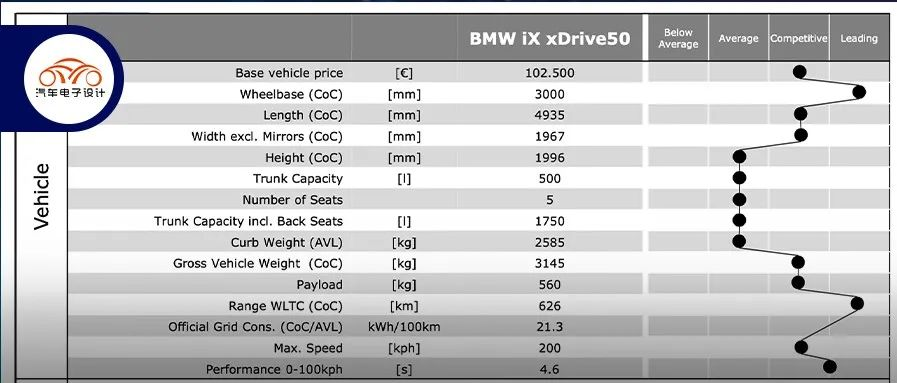Author: Zhu Yulong
AVL just held an online seminar “Vehicle Benchmark of the BMW iX”, mainly discussing the BMW iX model and showcasing their benchmark testing capabilities. BMW’s pure electric sales in 2021 were 104,000, with the expected sales between 240,000-250,000 this year and a target of 400,000 in 2023. Then it entered the era of higher sales targets with the giant cylinder.
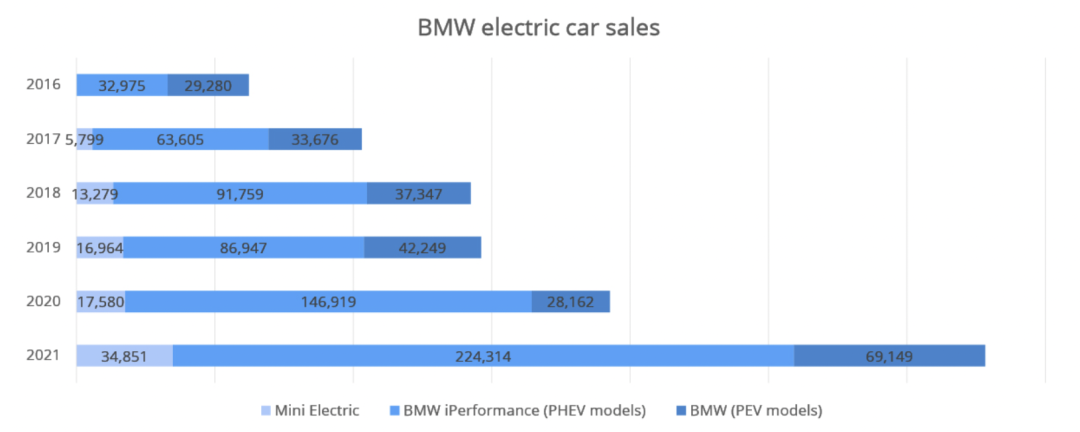
The BMW iX xDrive50 uses 111.5kWh and has a range of 626km according to WLTC. The battery uses a 369V 5P100S system solution, with a maximum charging power of 195kW.
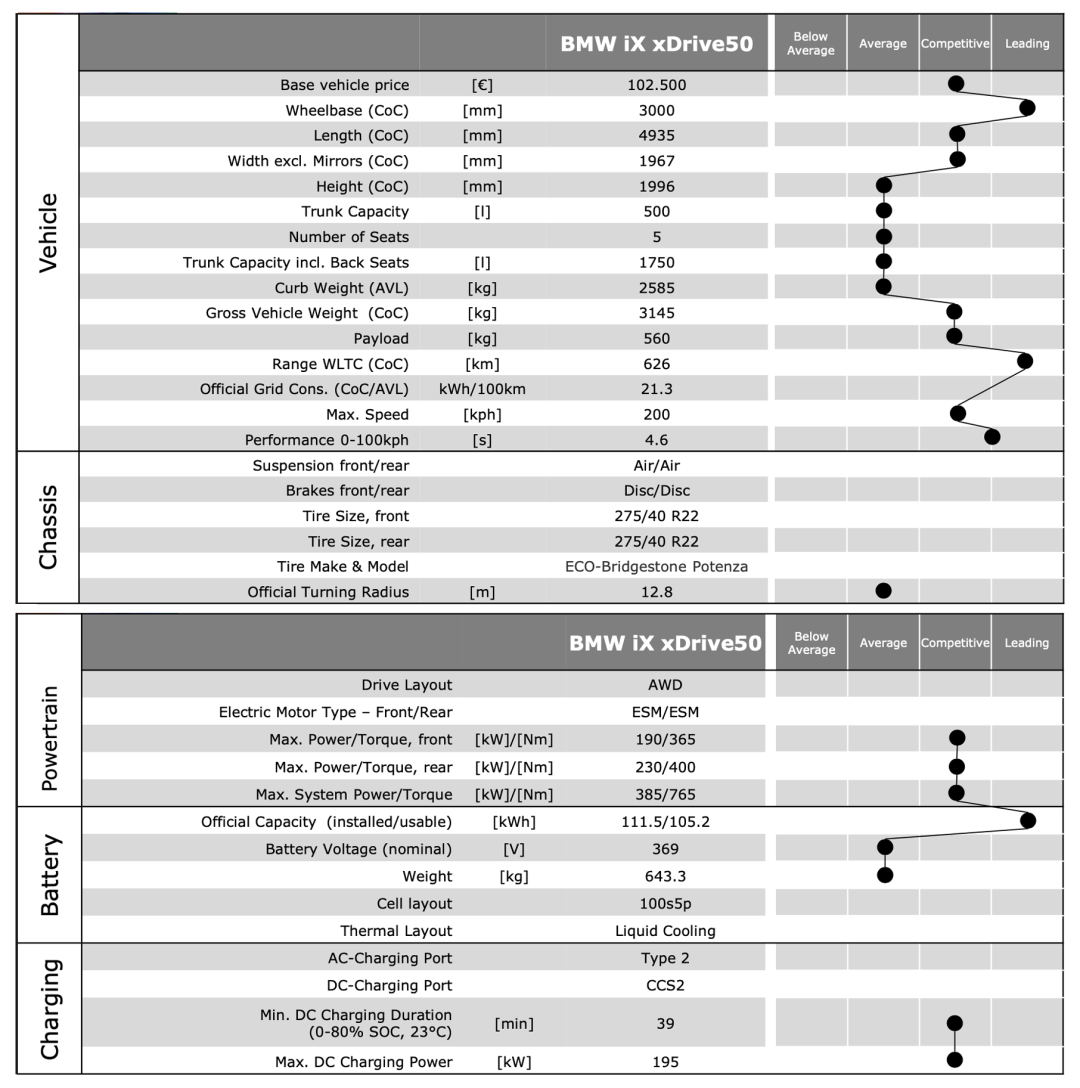
Dynamic Performance Benchmark
AVL sets up many collection points, so we can see the differences between different modes from the dynamic performance.
Acceleration Performance Test
Under fully loaded high SOC conditions, the acceleration performance is 4.65 seconds per 100 km. When the battery is at a low SOC, the output power of speed per 100 km will be adjusted, with the main limitation being at 60kph, and the power curve will decrease. The battery’s maximum output power is 435kW, while the maximum system power tested is 405kW (front 165kW + rear 240kW), reaching 197kph after about 18.3 seconds of starting, with a maximum acceleration of 6.6m/s².
My deep impression is that BBA still has people who are good at high-speed driving in oil cars when it comes to electric cars. Therefore, they are working hard to cope with the high-speed road conditions that are not very favorable for electric cars. In China’s road conditions, there are few scenarios where you can drive above 140kph.
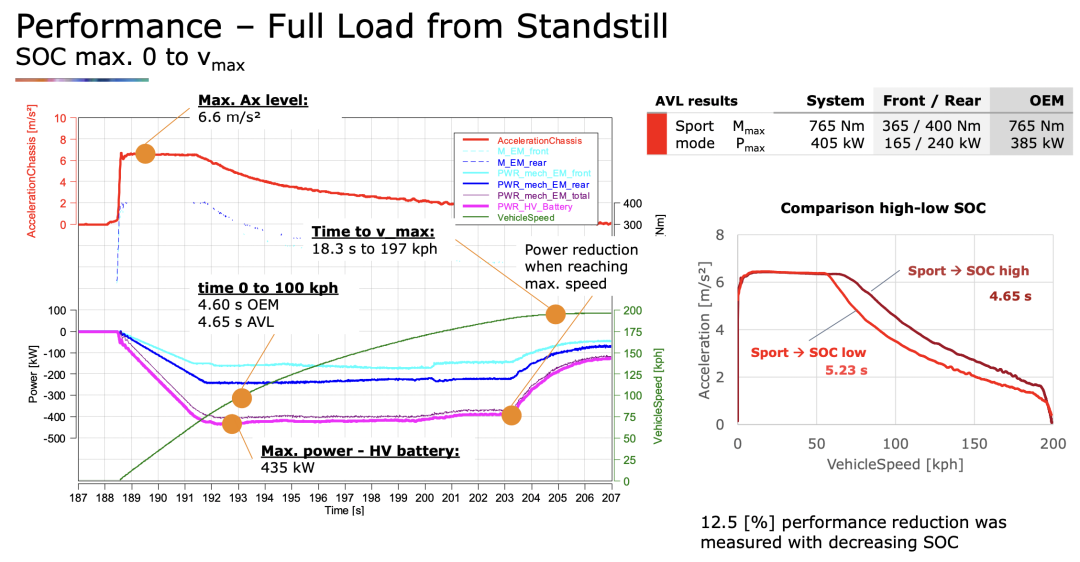 In the German driving mode, after intense driving cycles, some characteristics will undergo changes, but these characteristics are not related to battery temperature, which will be restored through cooling. BMW’s battery management strategy does cover these extreme working conditions for Chinese consumers.
In the German driving mode, after intense driving cycles, some characteristics will undergo changes, but these characteristics are not related to battery temperature, which will be restored through cooling. BMW’s battery management strategy does cover these extreme working conditions for Chinese consumers.
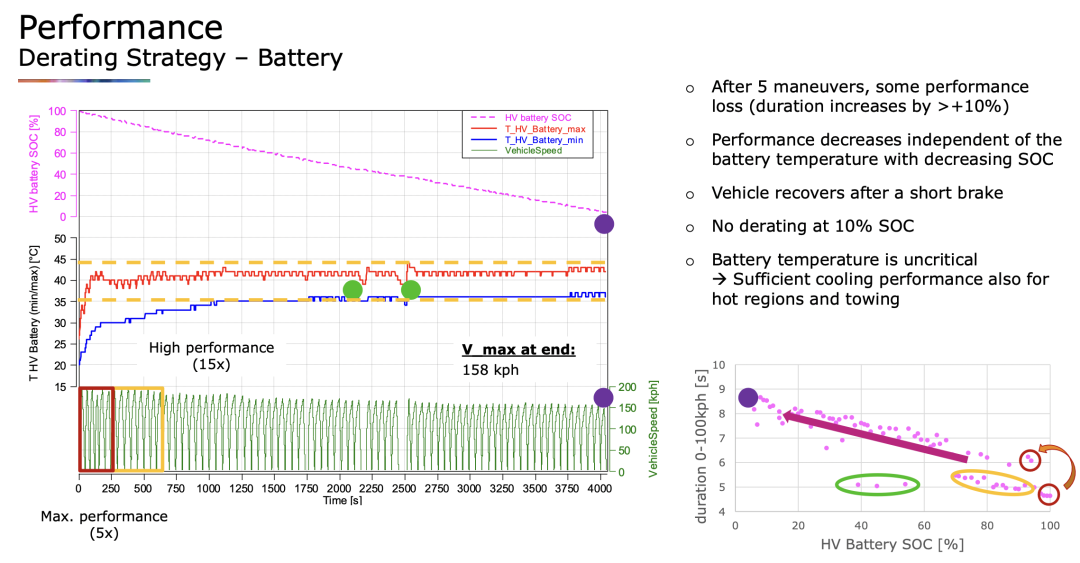
The issue of maximum characteristics is still limited by the temperature of the motor. Currently, motor characteristics do not seem particularly valued in China (not pursuing high-speed and continuity of the vehicle). I think that in the next step, with the penetration of electric vehicles in Europe and America, due to the differences in customer demand in electric drive, we may be drawn apart in some working conditions.
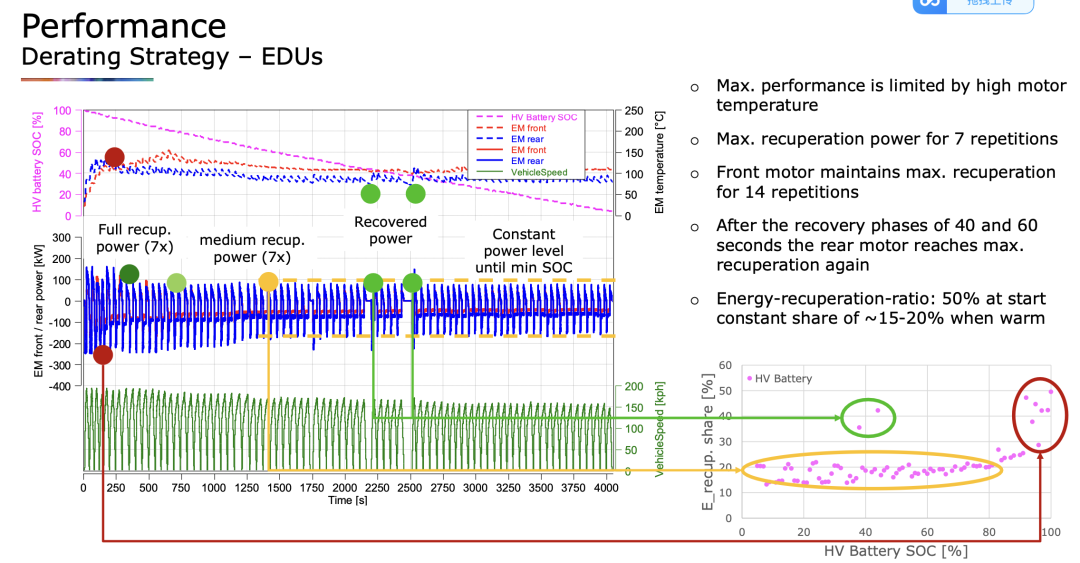
Actual Test Working Condition
Test Working Condition Analysis
The analysis of BMW iX’s actual driving energy consumption was conducted under the condition of driving from 100% SOC to 72% SOC and then fully charging it again. The test was carried out at a room temperature of 22°C with the air conditioning on during the test.
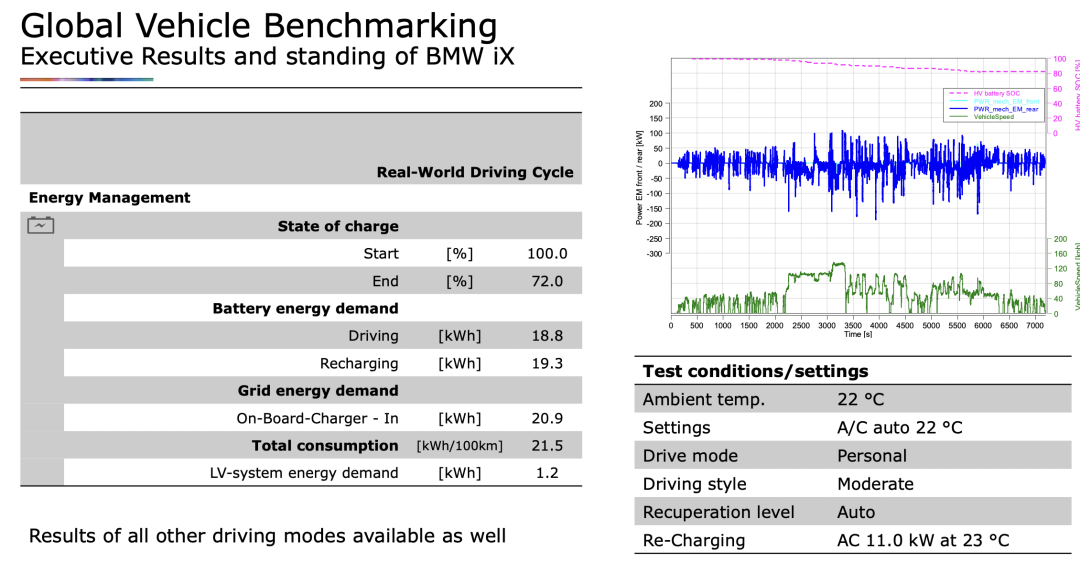
From the figure below, we can see that the four-wheel-drive version is mainly composed of 88% rear-wheel drive and 12% four-wheel drive.

High-voltage Energy Flow Chart
In this working condition, we can see the overall energy flow chart.
 The main energy consumption of iX comes from the battery, with a total of 27.1 kWh released and 8.3 kWh recovered. In actual use, the battery only consumed 19.3 kWh.
The main energy consumption of iX comes from the battery, with a total of 27.1 kWh released and 8.3 kWh recovered. In actual use, the battery only consumed 19.3 kWh.
Of the 23 kWh used for vehicle propulsion, 22.1 kWh was used for rear-wheel drive and 0.9 kWh was used for front-wheel drive, mainly counteracting driving resistance.
9 kWh of energy was recovered, with 8.3 kWh returned to the battery. The remaining amount was used for low-voltage system consumption.
The thermal loss of the front and rear electric drive system (EDU) is low, with a total loss of only 0.5+2.8 kWh during driving and 0.4 kWh during recovery.
During the process of charging from 72% SOC to full, the battery system received 19.3 kWh of electricity, while 20.9 kWh was obtained from the grid, 1.5 kWh was lost due to the in-car charger, and 0.2 kWh was lost to DC/DC.
Breakdown of 12V Low-Voltage Energy
During use, the total power of the 12V low-voltage system of BMW iX is around 500W, which can be mainly broken down as follows:
- Body control: 142.9W
- Automated driving assistance: 69.3W
- In-car entertainment system (HMI + navigation, etc.): 103.4W
- BMS, OBC, and powertrain: 41.4W
- Brakes and steering: 35.7W
- Whole vehicle thermal management (cooling + heating): 86.8W
- Doors, seats, and wipers: 25.6W
Within this breakdown, it is evident that the vehicle’s suspension and body kit consume a large amount of energy, while the ESP and EPS power are also significant during steering.
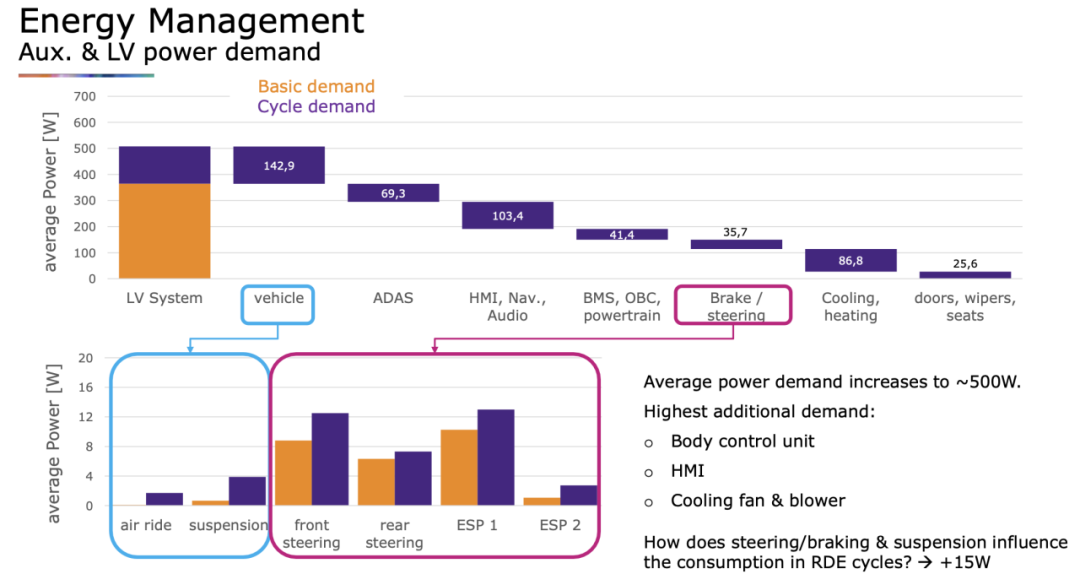
Conclusion: From a technical perspective, BBA’s engineers still have their own understanding of the products they make. We may be able to see what they pursue through these German tests and analyses.
This article is a translation by ChatGPT of a Chinese report from 42HOW. If you have any questions about it, please email bd@42how.com.
